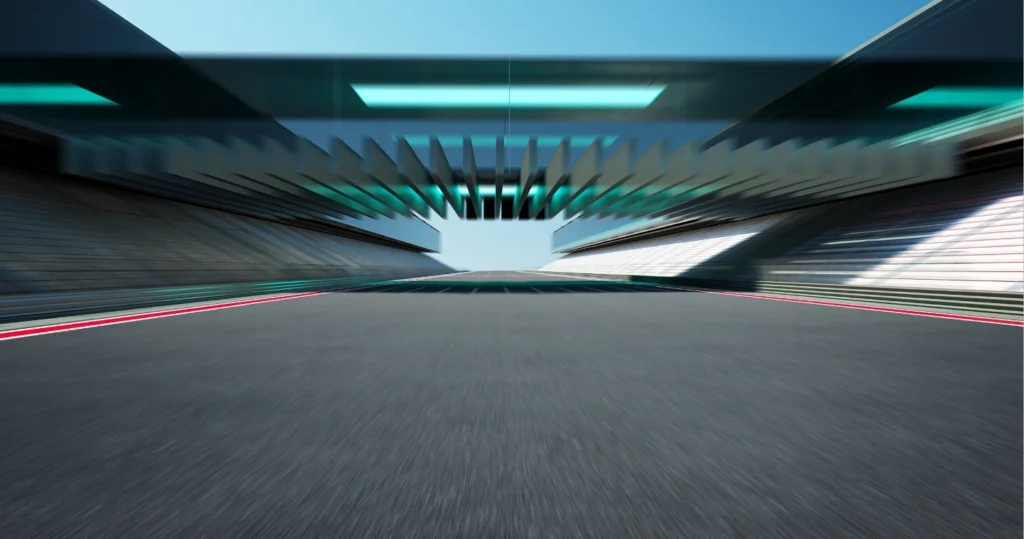As passionate sim racers, we’ve all felt the frustration of losing those precious tenths of a second—sometimes by just a blink—only to be haunted by the irresistible urge to chase a better lap. Pursuing performance in the virtual world demands methodology and technical expertise: every detail counts, from your driving technique to how you interpret your data. Surpassing your limits isn’t mere luck—it’s a skill honed by leveraging powerful tools, rigorous analysis, and constant adaptation. This guide is crafted for demanding competitors ready to invest in improve lap times through cutting-edge sim racing techniques.
Understanding and Interpreting Telemetry Data
To truly optimize driving technique, we must go beyond subjective feeling and rely on objective feedback. Telemetry lets us analyze key metrics such as speed, steering angle, braking pressure, and sector times—delivering insights into both our strengths and our limiting mistakes. Using telemetry analysis tools such as Sim Racing Telemetry, we can record and visualize every lap, comparing braking points, throttle application, and corner exit speed against faster competitors for immediate actionable feedback.
- Extract your braking points analysis and adjust for earlier or later pedal release.
- Break down corner exit speed and understand slowdowns at specific track points.
- Use session overlays to compare sector performance lap by lap.
- Validate improvements and corrections using objective delta times after setup changes.
Mastering telemetry is the foundation for high-level performance. Experts recommend focusing on one weakness at a time and reviewing comparative data with sector-by-sector overlays. For a deeper dive into practical telemetry application and live feedback, you can find detailed community resources here.
Optimizing Hardware and Software Configuration
The precision of your inputs directly influences your ability to improve lap times. Simulation hardware such as load cell pedals, direct drive wheels, and triple screen setups can elevate both immersion and accuracy. Proper calibration is essential: fine-tune the wheel’s rotation, adjust pedal sensitivity, and set your FOV (field of view) to match your cockpit for authentic perception.
- Regularly calibrate steering wheel and pedal input for consistent feedback.
- Optimize graphics settings for steady frame rate and total absence of lag.
- Configure triple screens for a panoramic field of vision, minimizing blind spots and improving reference cues.
- Adopt precision devices; upgrading to direct drive systems or advanced pedal sets pays dividends in consistency.
Let’s compare the impact of hardware upgrades on precision and immersion:
| Hardware Type | Precision Driving Improvement | Immersion Gain |
| Basic wheel + desk pedals | Moderate accuracy, reduced feedback | Low |
| Load cell pedals + belt drive wheel | High brake modulation, advanced cornering | Medium |
| Direct drive wheel + triple screens | Maximum input fidelity, instant reaction | Full immersion, best field of view |
The right combination of hardware and settings is a lever for incremental performance improvement—don’t hesitate to test and adopt professional setups where possible.
Adapting and Customizing Your Virtual Car Setup
Setup optimization plays a decisive role in lowering lap times. Precise adjustments to tyre pressure, chassis geometry, aero balance, and gear ratios can unlock vital tenths when tailored to both your driving style and track characteristics.
- Match tyre pressure and camber to track temperature and grip demands for optimal mid-corner speed.
- Fine-tune brake bias adjustment to control stability into and through complex corners.
- Alter wing angles for the right compromise between corner exit speed and straight-line pace.
- Adjust gear ratios to balance acceleration with top speed, depending on track sector profiles.
For example, at Monza, a lower downforce setup is preferred to maximize exit speed on long straights, while a technical circuit like Suzuka requires higher aero for roll stability. To progress, we must experiment with incremental changes, validate each through telemetry, and always align setup choices with our personal driving technique optimization.
Mastering Racing Lines and Complex Corner Management
Achieving consistency in sim racing comes down to mastering every phase of the corner. We analyze and execute advanced racing strategies: trail braking, finding the ideal apex, and sequencing throttle application for seamless exit speed.
- Practice trail braking to maximize deceleration and stabilize the car on entry.
- Use reference markers for braking points analysis and apex targeting.
- Adjust line selection according to corner type—early apex for slow bends, later apex for fast sweepers.
- Focus on exit speed importance for overtaking and lap time reduction.
We can adopt practice routines such as repetitive sector drills and lap overlays to engrain optimal lines. Recording and reviewing replays—especially side-by-side with faster drivers—clarifies where our trajectory diverges and highlights corrections to gain those elusive tenths.
Optimizing Mental Focus and Consistency During Races
The path to consistency in sim racing demands not only technical prowess but also robust mental focus. We work to build concentration, resist stress, and maintain peak performance over long stints. Incorporating dedicated mental routines—relaxation, visualization, targeted breathing—can make split-second decisions automatic and reduce costly errors.
- Develop a ritual before each session: mindset, focus, objective review.
- Set alarms or reminders for hydration and micro-breaks during marathon runs.
- Train to ignore the clock and stay “in the bubble” for single-skill improvement (low-resolution approach).
- Debrief after each stint to identify external or internal triggers (fatigue, frustration) affecting performance.
By progressively building resilience, we transform pressure into clarity and leverage routine for sustained incremental performance improvement. Mental rehearsal is just as vital as track familiarization.
Leveraging the Community and Coaching for Faster Progress
Maximum progress in sim racing is achieved by integrating community resources and expert support. By joining focused forums and leagues, we exchange setups, compare telemetry, and benefit from personalized coaching and replay reviews. Engaging with collaborative platforms exponentially accelerates knowledge transfer and helps resolve limitations more effectively.
- Share your telemetry data, ask for targeted feedback from peers and coaches.
- Participate in group sessions covering sector performance comparison and error correction.
- Access top-tier expert guides and video breakdowns to solidify theory with empirical evidence.
- Utilize dedicated apps and coaching platforms for 1-on-1 improvement.
The power of community is in multiplying perspectives and building confidence. To connect with leading expert resources and active sim racing networks, explore dedicated hubs and guides—some of the most advanced tools are available here.
Using Analytical Tools and Methods to Accelerate Improvement
Recording sessions and harnessing analysis tools allow us to rapidly pinpoint errors and validate fixes. Compare your data with faster drivers, leverage AI-powered auto insights, and adopt expert track guides to diagnose sector-by-sector bottlenecks. Systematically break down the key pain points and prioritize corrections.
- Log every lap and overlay traces for direct sector comparison with benchmarks.
- Apply incremental corrections, then verify in real time if delta times improve.
- Use professional software or coaching apps for guided data review and routine planning.
- Exploit video analysis and community shared replays to spot subtle technique gaps.
A disciplined analytical approach accelerates correct error identification and enables leapfrog progression—not just step-by-step. Combining modern technology (AI, cloud logging) with traditional coaching is a proven recipe for breaking through performance plateaus.
Summary Checklist: Advanced Actions to Sharpen Your Lap Times
- Review and analyze telemetry after every session.
- Optimize and calibrate every hardware input for maximum precision.
- Fine-tune car setup adapted to both your driving style and the specific track.
- Master racing lines, trail braking, and corner exits through repetitive sector-focused drills.
- Structure mental routines to build concentration and resistance to stress.
- Engage with expert communities, coaching sessions, and dedicated resources for skill transfer.
- Compare, record, and analyze every lap with advanced tools and guides.
- Adopt a low-resolution approach: focus on one car, one track, one technique at a time.
Common Advanced Errors and Solutions: Novice vs. Expert
| Error Type | Typical Novice Approach | Expert Correction |
| Braking inconsistency | Relying on instinct, late braking without reference | Strict use of braking points analysis, progressive pedal modulation |
| Incorrect car setup | Copy-pasting setups without adaptation | Personalized tuning based on corner exit speed and track demands |
| Plateaued performance | Repetitive laps, fixation on chrono | Low-resolution approach, single skill focus, mental detachment from lap times |
| Poor data usage | Ignoring telemetry, relying on “feel” | Routine sector performance comparison and error mapping via software |
Additional Resources: Guides, Coaching, and Community
To facilitate rapid skill acquisition, explore top-tier guides, coaching apps, and community platforms. These tools provide expert insight into all aspects of sim racing techniques, from precision driving and car tuning to mental focus. Rely on collective experience and technological innovation for exponential progression. For recommended expert resources and guides, visit here.
Conclusion
Progressing from competent to truly fast sim racer requires us to master not just the car and track, but our own analysis, setup, routine, and psychology. By systematically applying advanced techniques, exploiting data, optimizing hardware, and leveraging the power of community and coaching, we can confidently improve lap times and push beyond our previous limits. Every tenth matters; your next breakthrough is waiting in the details—so invest in the expert approach and join the circle of top performers.






